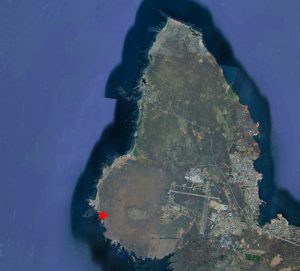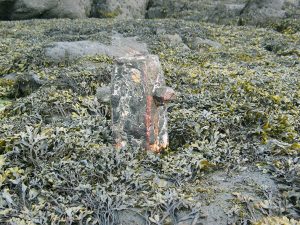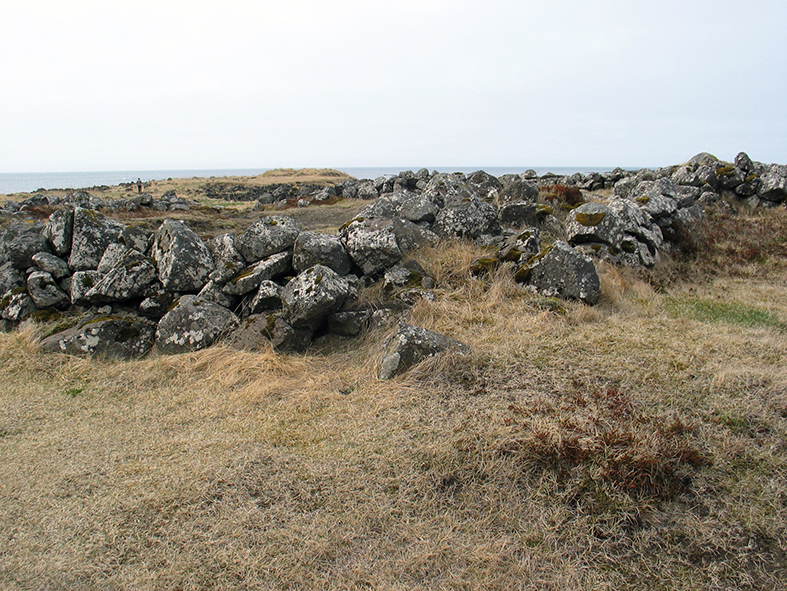Immer Weiter – Fragen und Antworten, Teil 4: Handel und Handelswaren
Bart Holterman, 12 October 2023
(for English, see below)
In diesem vierten Teil der Reihe, in der wir Fragen von Besuchenden der Ausstellung „Immer Weiter – die Hanse im Nordatlantik“ beantworten, haben wir Fragen gebündelt, die über Handelswaren gehen.
Wird heute noch immer Stockfisch gegessen?
Ja, Stockfisch wird immer noch vor allem in Norwegen hergestellt und von dort auch exportiert. In einzelnen europäischen Regionen gibt es bestimmte Zubereitungsarten, die durch lokale Gruppen als kulinarisches Erbe gepflegt werden. Ein Beispiel ist die „Stockfischbrüderschaft“ (Confraternita del Bacalà alla Vicentina) in der italienischen Region Venetien. Überraschenderweise ist vor allem Nigeria heutzutage ein wichtiger Absatzmarkt für Stockfisch. In Portugal und Spanien ist zudem der gesalzene und getrocknete Dorsch, ähnlich wie der Fisch der in der Frühen Neuzeit in Shetland hergestellt wurde, unter dem Namen Bacalhau/Bacalao ein wichtiger Bestandteil der nationalen Küche.
Kommt Butter heute noch immer aus Schottland?
Butter wird heute noch immer in Schottland produziert, aber die Qualität hat sich seit der Frühen Neuzeit deutlich verbessert. In Gegensatz zu irischer Butter wird sie allerdings nur wenig ins Ausland exportiert.
Wie viele Knochen gibt es in der Ausstellung?
Genau haben wir das nicht gezählt, aber es gibt viele Knochen, vor allem von Fischen, an unterschiedlichen Stellen in der Ausstellung. Knochen sind sehr wichtig als archäologisches Fundmaterial, weil sie uns über die Ernährungsgewohnheiten der Menschen in der Vergangenheit erzählen.
Werden auch Knochenreste bei den Wracks gefunden?
Ja, zum Beispiel sind im Wrack der Darßer Kogge Fischknochen und ein Rentiergeweih gefunden worden, diese gehörten zur Ladung des Schiffes. Ob die Fische für den Verzehr an Bord oder als Handelsware mitgenommen wurden, lässt sich jedoch nicht mehr eindeutig feststellen.
Wie viele Fässer waren auf der Bremer Kogge?
Nur ein kleines, das mit Teer gefüllt war. Die Kogge ist noch im Bau gesunken und war deswegen nie als Frachtschiff im Einsatz. An Bord von anderen Schiffswracks werden jedoch manchmal hunderte Fässer gefunden. Wie viele Fässer an Bord der Bremer Kogge gepasst haben, ist schwierig zu sagen, da es Fässer in den unterschiedlichsten Größen gab.
Wofür wurde das minderwertige Salz benutzt?
Salz war im Mittelalter nicht immer leicht zugänglich und musste aus unterirdischen Speichern (wie z.B. in Lüneburg) abgebaut, durch Verdünstung von Meereswasser (wie z.B. das spanische und französische Baiensalz) oder durch die Verbrennung von salzhaltigem Torf hergestellt werden. In manchen Fällen waren viele Reststoffe im Salz enthalten, was bei der Konservierung von Lebensmitteln mit Salz auf Dauer zum Verderben führen könnte. Deswegen wurde bei der Trockenfischherstellung nur möglichst reines Salz verwendet. Das übrige Salz konnte jedoch noch als günstiges Kochsalz, in chemischen Prozessen oder in der Medizin verwendet werden.
Mit welcher Währung wurde gehandelt zwischen den Ländern?
Shetland und Orkney hatten keine eigene Münze, und deswegen bezahlten die ausländischen Kaufleute dort mit ihrer eigenen Währung. Eine Auswahl an schottischen, niederländischen und deutschen Münzen, die in Shetland gefunden wurden, ist in der Ausstellung zu sehen. In Schriftquellen wird oft mit rix dollar (Reichstaler) gerechnet, aber es ist nicht genau zu sagen, ob hiermit auch bezahlt wurde; möglicherweise diente sie nur als Rechenwährung.
English version
In this fourth part of the series, in which we answer questions of visitors of the exhibition „Immer Weiter“, we have collected questions about trade and commodities.
Is stockfish still being eaten today?
Yes, stockfish is still being produced, mainly in Norway, and exported from there. In some European regions certain traditional recipes for cooking stockfish exist, which local groups cherish as a culinary heritage. An example is the „stockfish confraternity“ in the region Veneto in Italy, the Confraternita del Bacalà alla Vicentina. Surprisingly, today one of the most important export markets for stockfish is Nigeria. And in Portugal and Spain the salted dried cod known as bacalhau/bacalao is an important element of the national cuisine. The salt fish produced in Shetland in the early modern period must have been very similar.
Is butter still being exported from Scotland?
Butter is still produced in Scotland these days, but the quality has improved much since the early modern period. In contrast with Irish butter, however, Scottish butter is not exported in large quantities.
How many bones are on display in the exhibition?
We haven’t counted them exactly, but many (fish) bones are exhibited in various displays. The reason is that animal bones are important archaeological evidence for the consumption habits of people in the past.
Are bones also found near shipwrecks?
Yes. For example in the wreck of the Darßer Kogge, fish bones and a reindeer antler have been found, which can be seen in the exhibition. These were part of the cargo of the ship. However, it is difficult to say whether the fish were intended for consumption on board or if they were a trading commodity.
How many barrels were there on the Bremen Cog?
Only a small barrel was found, which was filled with tar. The ship sank while it was still being constructed, and therefore it was never used as a cargo ship. But on board of other shipwrecks, hundreds of barrels are found sometimes. It is difficult to say how many barrels would fit into the cargo hull of the Bremen Cog, as barrels came in all kinds of sizes.
What was the low-quality salt used for?
Salt was a commodity that was not readily available in the Middle Ages, as it had to be mined from deposits in the ground (for example in Lüneburg), or it had to be destilled by evaporating sea water (the so-called Bay salt from Spain and France) or by burning peat with a high salinity. In some cases, many impurities remained in the final product, which could lead to the spoilage of commodities that were preserved with salt. For this reason, fish was only cured with very pure salt. The lower-quality salt could, however, still be used for various purposes: for cooking, in chemical processes or in medicine.
Which currency was used in the trade between the countries?
Shetland and Orkney did not have their own currency or mint, and therefore the foreign merchants paid there with their own currency. A selection of Scottish, Dutch and German coins that were found in Shetland is displayed in the exhibition. Written accounts often count in rix dollar (Reichstaler), but it is unclear whether this was only a currency used for calculation, or if these coins were actually used in the trade.
Posted in: Exhibition, General
German merchants at the trading station of Básendar, Iceland
Bart Holterman, 9 March 2018
The German merchants who sailed to Iceland in the 15th and 16th century used more than twenty different harbours. In this post we will focus on one of them: Básendar. The site is located on the western tip of the Reykjanes peninsula and was used as a trading destination first by English ships, then German merchants from Hamburg and later by merchants of the Danish trade monopoly. Básendar is mentioned in German written sources with different spellings as Botsand, Betsand, Bådsand, Bussand, or Boesand.

Aerial image of Básendar (marked with the red star), located on the Western end of Reykjanes peninsula, and Keflavík airport on the right (image Google Earth).
Básendar was one of the most important harbours for the winter fishing around Reykjanes. In the list of ten harbours offered to Hamburg in 1565, it is the second largest harbour, which annually required 30 last flour, half the amount of Hafnarfjörður (the centre of German trade in Iceland). German merchants must have realised it´s potential at a very early stage, and it is therefore the first harbour which we know to have been used by the Germans, namely by merchants from Hamburg, in 1423.
The trading station was located on a cliff just south of Stafnes, surrounded by sand. Básendar was always a difficult harbour, exposed to strong winds and with skerries at its entrance. Ships had to be moored to the rocks with iron rings. The topography of the site also made the buildings vulnerable to spring floods, and during a storm in 1799 all buildings were destroyed by waves, leading to the abandonment of the place. Today, the ruins of many buildings can still be seen, as well as one of the mooring rings, reminding the visitor of the site’s former importance.
Básendar also became a place for clashes between English and German traders. Already the first mention of Germans in the harbour came from a complaint by English merchants that they had been hindered in their business there. In 1477 merchants from Hull complained as well about hindrance by the Germans and in 1491 the English complained that two ships from Hull had been attacked by 220 men from two Hamburg ships anchoring in Básendar and Hafnarfjörður.
The famous violent events of 1532 between Germans and English started in Básendar as well, when Hamburg skipper Lutke Schmidt denied the English ship Anna of Harwich access to the harbour. Another arrival of an English ship a few days later made tensions erupt, resulting in a battle in which two Englishmen were killed. The events in 1532 marked the end of the English presence in Básendar, and we hear little about the harbour in the years afterwards. The trading place seems to have been steadily frequented by Hamburg ships, sometimes even two per year. In 1548, during the time when Iceland was leased to Copenhagen, Hamburg merchants refused to allow a Danish ship to enter the harbour, claiming that they had an ancient right to use it for themselves.
Hamburg merchants were continuously active in Básendar until the introduction of the Danish trade monopoly, except for the period 1565-1583, when the harbour was licensed to merchants from Copenhagen. From 1586 onwards, the licenses were given to Hamburg merchants again. These are the merchants who held licences for Básendar:
1565: Anders Godske, Knud Pedersen (Copenhagen)
1566: Marcus Hess (Copenhagen)
1569: Marcus Hess (Copenhagen)
1584: Peter Hutt, Claus Rademan, Heinrich Tomsen (Wilster)
1586: Georg Grove (Hamburg)
1590: Georg Schinckel (Hamburg)
1593: Reimer Ratkens (Hamburg)
1595: Reimer Ratkens (Hamburg)
The last evidence we have for German presence in Básendar provides interesting details about how trade in Iceland operated. In 1602 Danish merchants from Copenhagen concentrated their activity on Keflavík and Grindavík. A ship from Helsingør, led by Hamburg merchant Johan Holtgreve, with a crew largely consisting of Dutchmen, and helmsman Marten Horneman from Hamburg, tried to reach Skagaströnd (Spakonefeldtshovede) in Northern Iceland, but was unable to get there because of the great amount of sea ice due to the cold winter. Instead, they went to Básendar which was not in use at the time. However, the Copenhagen merchants protested. King Christian IV ordered Hamburg to confiscate the goods from the returned ship. In a surviving document the involved merchants and crew members told their side of the story. They stated that they had been welcomed by the inhabitants of the district of Básendar, who had troubles selling their fish because the catch had been bad last year and the fish were so small that the Danish merchants did not want to buy them. Furthermore, most of their horses had died during the winter so they could not transport the fish to Keflavík or Grindavík and the Danes did not come to them. The Danish merchants were indeed at first not eager to trade in Básendar, and did not sail there until they moved their business from Grindavík in 1640.
Further reading
Ragnheiður Traustadóttir, Fornleifaskráning á Miðnesheiði. Archaeological Survey of Miðnesheiði. Rannsóknaskýrslur 2000, The National Museum of Iceland.

